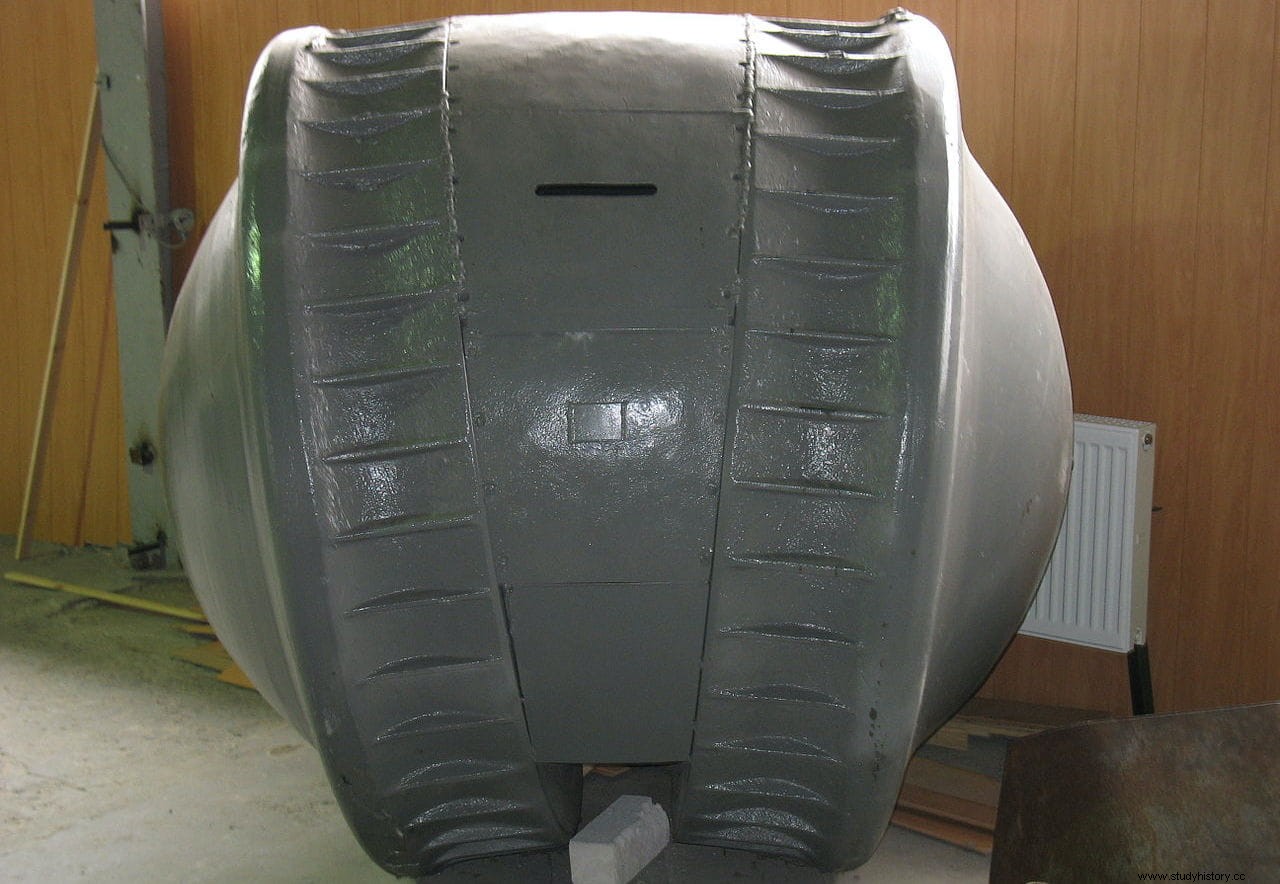A couple of days ago we took a look at the first steps of robotic military technology in the article dedicated to BigDog . Seeing the photo that heads today's one, anyone would venture to suppose that we continue along the same lines, analyzing experimental weapons that are probably the foundations of future wars; however it would be a mistake because the Kugelpanzer , which is what this unique spherical tank is called (in fact, that's what its name means in German), is not of recent design but comes from World War II.
The one in the image can be seen next to a Tiger at the Kubinka Museum of Tanks, a Russian center that exhibits an interesting collection of armored vehicles. It was found by the Red Army in 1945 in Manchuria, abandoned and constituting a symbol of the collapse of the eastern front of the Axis. The reason for being in such a remote place was, it is believed, that the Germans handed it over to their Japanese allies, since they fought several battles with the Soviets in that region until they were expelled by Marshal Vasilevsky with Operation August Storm a month before the end of the contest.
The value of the Kugelpanzer it is special because it is the only copy found and because we lack any type of documentation on its manufacture; no plans are preserved, nor instructions other than indirect sources. However, it was not something completely new either because similar concepts had already been worked on in the First World War. And not only Germany, as can be seen in these fun North American drawings, not to mention the famous Netopyr or Lebedenko Tank, better known as the Tsar's Tank.

However, in that conflict the technology was not yet so advanced and it was enough that it welcomed the appearance, in the Battle of Flers-Courcelette (on the Somme front, 1916), of the first combat tank, the famous Mark I (referred to as a "tank" to make it look like a water container and mislead spies) as a weapon intended to break up stale trench warfare. The Germans then worked on an answer and the first idea, at the beginning of 1917, was the Treffas-Wagen , a somewhat bizarre car that instead of caterpillars used two huge side wheels almost three and a half meters in diameter, between which was a 20 mm cannon. It did not go ahead and only a prototype was made, as the Sturmpanzerwagen A7V was built instead. , which received its baptism of fire in 1918 near Saint Quentin, in northern France.
It was not until the interwar period that the idea of a round tank was seriously considered, although in the long run the more conventional designs prevailed. However, the Soviets did continue the idea in parallel and in 1942 L.P. Mokrousov, chief engineer of the Red Star factory (Kharkov, Ukraine) presented an unusual design:a huge tank with a completely spherical shape destined for a tank destroying mission and the destruction of bunkers. It had an armor between 200 and 250 mm. plus a powerful armament (two 155 mm cannons, eight machine guns and two anti-aircraft guns) that would undoubtedly make it a fearsome enemy because, on top of that, it could point all the weapons simultaneously at the same target.
Crewed by 8 people, the most curious of the Protivotank , as it was popularly known, was not only that it was extraordinarily maneuverable and could reach a speed of 90 kilometers per hour despite its enormous proportions (10 meters high and 500 tons in weight), but also the fact that its caterpillars in Instead of being on the sides, they were located together in the center, where the two engines were also located (petrol, with a power of 1,000 horsepower each, plus an electric generator). however, the project was deemed too complicated and was scrapped. Mokrousov, by the way, ended up in the Gulag accused of embezzlement.

In exchange, smaller versions that would be easier to manufacture were proposed, such as the one proposed by Nikolai Mikhailovich Vostretsov, but in the end the effectiveness of the T-34 made visionary bets fall into oblivion in favor of normal tanks. Seen the seen, the Kugelpanzer it was the only one of that type that came out ahead, although when it appeared at the end of the war it had no run. That yes, surely it was not planned to break front lines but to carry out reconnaissance, since it only had a machine gun (perhaps an MG 34 or 42... or, in the Japanese case, a 96 LMG) that fired from just below the slot vision, and also its armor is only 5 mm. The only crew member, who accessed through a rear gate, had to take care of driving and shooting.
For the rest, little is known about it for sure, since the mechanisms have been removed and it is forbidden to take samples of its composition, so it is unknown what material it is made of exactly. It is believed that the engine was a two-stroke cylinder that enabled it to reach a speed of 8 kilometers per hour and needed a small rear wheel to change direction and maintain stability, like a miniature version of that Treffas -Wagen from 1917. Some venture that it was made by Krupp. It would have been fun to see an entire division in action.
